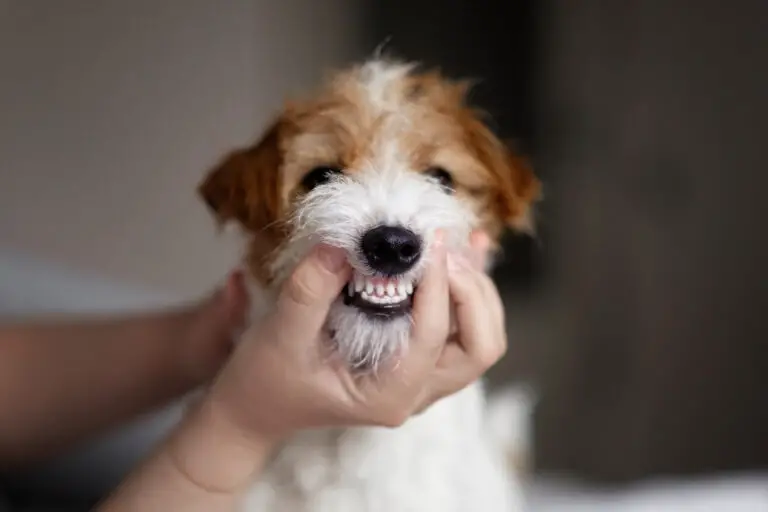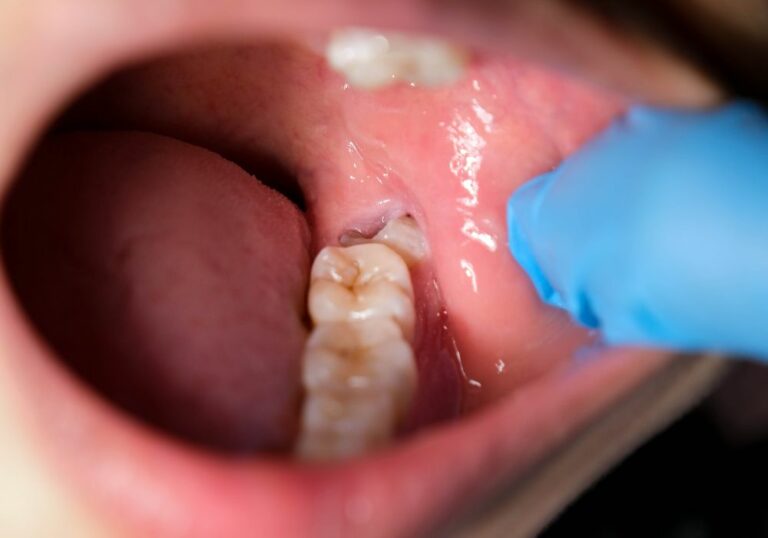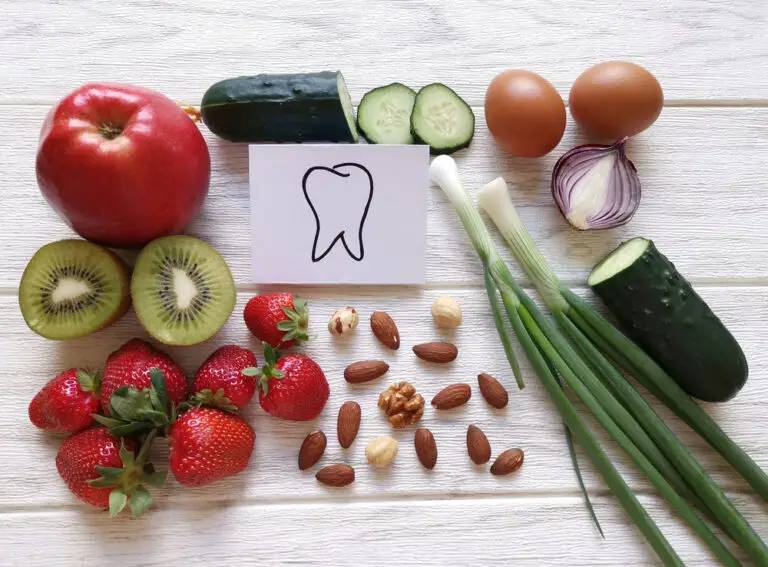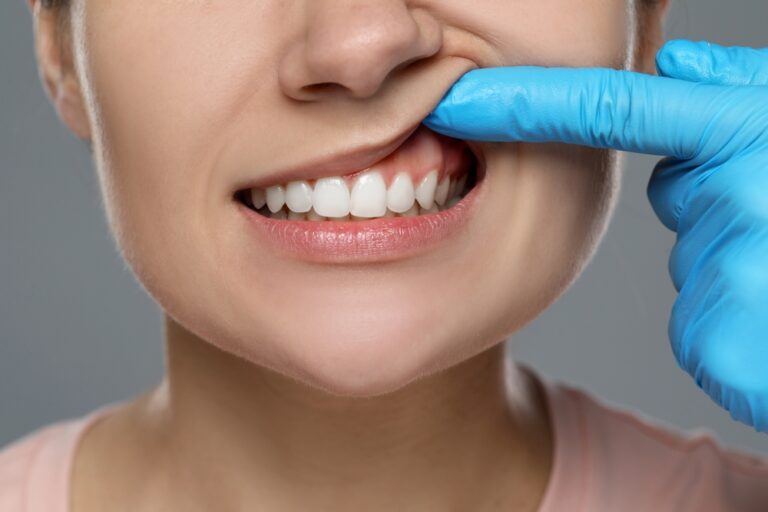As a dog parent, you brush your pup’s fur, take them on walks, and do everything you can to keep them happy and healthy. But you may notice their teeth looking a little brown and wonder, “Why are my dog’s teeth so brown?”
Discolored teeth are common in dogs. Brown stains usually start out subtle but can become more pronounced over time. If you see brown buildup on your furry friend’s teeth, it’s important to understand the possible causes and remedies.
While dogs can’t brush and floss their own teeth, there are steps you can take to remove stains and prevent excessive plaque buildup. With some diligent home care and professional cleanings, you can help keep your dog’s smile looking its brightest and their oral health in top shape!
What causes brown staining on a dog’s teeth?
There are several potential culprits when it comes to dogs getting brown stains or discoloration on their teeth.
1. Plaque and tartar buildup
The #1 cause of brown dog teeth is plaque and tartar. Plaque is a sticky film of bacteria that starts forming on the teeth within a few hours after eating. Within just a few days, plaque combines with minerals in saliva to harden into tartar.
Tartar has a brownish-yellow color and sticks firmly to the teeth. Eventually it spreads under the gums as well. The longer tartar sits on the teeth, the darker brown it becomes. Tartar is porous and more plaque grows on top of it, making stains worse.
Smaller dog breeds tend to build up plaque and tartar more quickly. Without proper dental care, most dogs will develop moderate to severe tartar by middle age. The back teeth near the tongue are especially prone to heavy tartar.
In addition to its brown color, tartar also causes bad breath and gum infection. Advanced periodontal disease can lead to pain, tooth loss and serious health issues.
2. Food and treat stains
Certain foods and treats can discolor or stain dogs’ teeth:
- Dry kibble bits get stuck along the gumline as dogs chew. The starches and sugars in kibble also increase plaque bacteria.
- Chew toys and bones start to look grungy as they get covered in slobber, bits of food and plaque. The rubber and nylon can stain teeth.
- Biscuits and dental chews tend to be quite high in sugar. They often crumble, sticking to the grooves of dogs’ teeth.
- Pig ears are extremely high in fat. Gnawing on them regularly causes plaque and brown stains to build up.
- Berry skins and juices, carrots, beets and other vegetables with pigments can tint a dog’s teeth over time.
- Dogs who lap or lick their lips a lot when eating may get stains around their mouths.
3. Tobacco and cigarette stains
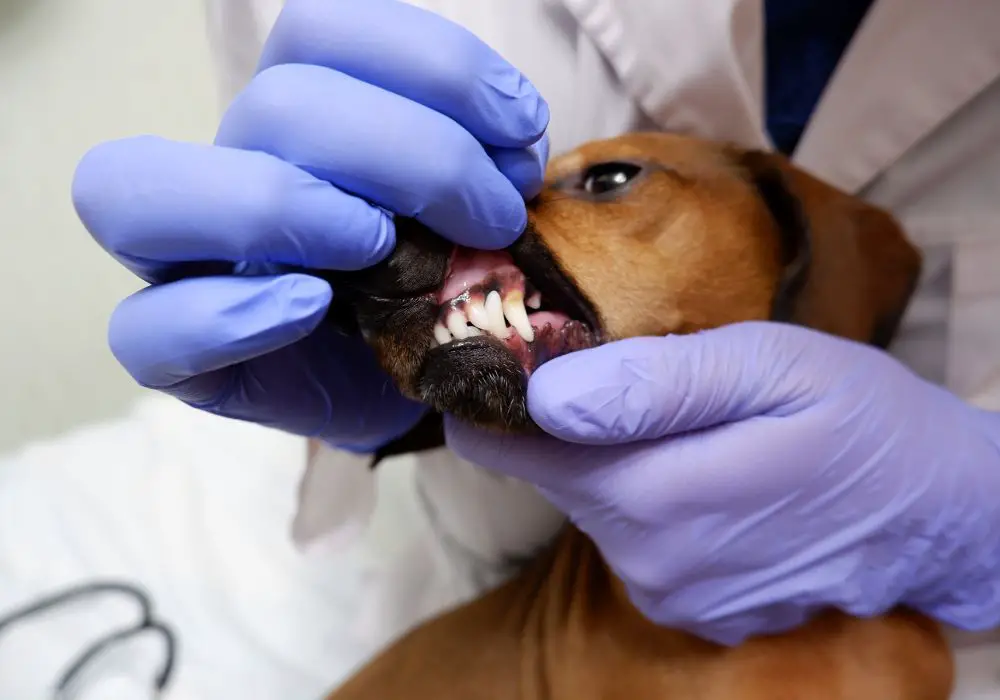
Chewing on cigarette butts or getting into smoked tobacco products can stain a dog’s teeth varying shades of yellowish-brown to blackish-brown. Tobacco tar sticks readily to teeth. Most dogs find tobacco incredibly bitter and will avoid it after one taste. But others seem to think the butts and leaves are fun toys.
4. Injury and trauma
If a tooth is damaged from trauma like a fracture, the inner layer of the tooth called dentin can become exposed. Dentin has a darker brownish color compared to the white enamel outer layer. Exposed dentin will make a tooth appear darker.
Injured teeth are also at high risk of infection, which causes additional discoloration and decay. Dogs with chipped, cracked or otherwise damaged teeth should see the vet right away to assess options.
5. Periodontal disease
Untreated tartar and advanced gum disease cause tissue inflammation, receding gums and eventual tooth root exposure. The roots can turn brown and brittle as they decay. Dogs with significant periodontal disease often have very brown, rotten-looking teeth.
Preventing brown stains on your dog’s teeth
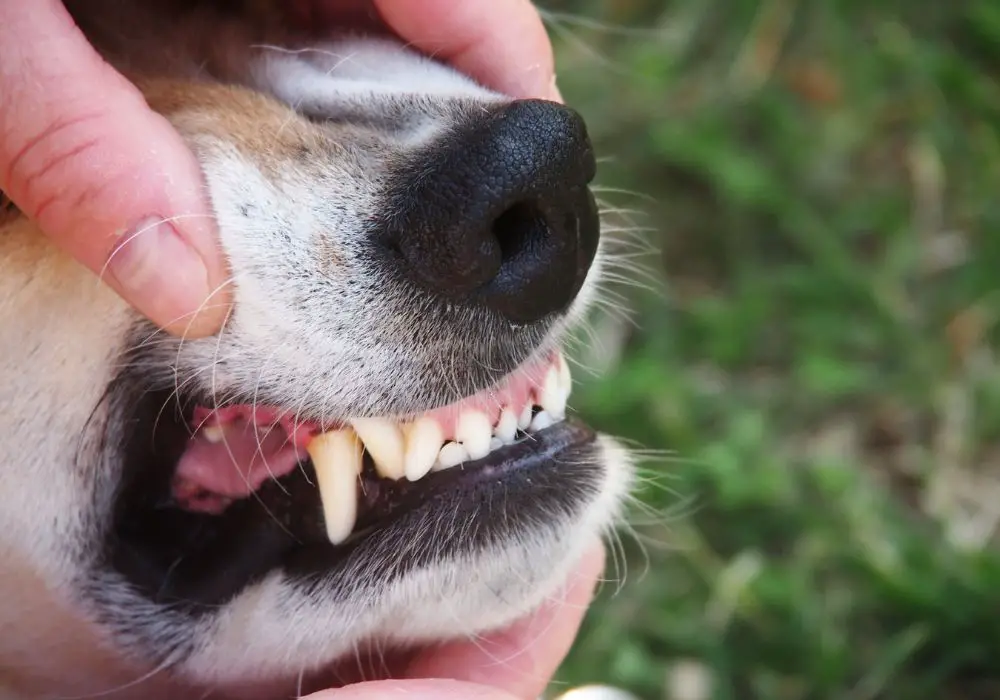
The best way to keep dogs’ teeth pearly white is through prevention:
- Daily brushing – Regular brushing with a dog-safe toothpaste is ideal. Even brushing a few times a week can be beneficial. Always use a soft brush and gentle motion.
- Veterinary cleanings – Professional cleanings are crucial for controlling tartar. Most dogs need a cleaning at least once a year.
- Dental treats – Look for treats and chews with the VOHC approval. They mechanically scrape away plaque through chewing action.
- Oral rinses – Products like HealthyMouth contain antimicrobial ingredients to reduce bacteria. Rinsing daily helps curb plaque.
- Diet – Some dental prescription diets and raw meaty bones help clean teeth more effectively than kibble.
- Fresh water – Provide fresh, clean water always to help rinse away food debris and decrease oral bacteria.
What to do if your dog has brown stained teeth?
If your dog has significant brown buildup on multiple teeth, make an appointment with your vet. The veterinarian will:
- Examine your dog’s mouth, palpate the jaws and assess for signs of infection
- Take dental x-rays if periodontal disease is suspected
- Recommend extraction for non-salvageable teeth that are severely damaged or infected
- Perform a professional dental cleaning and polishing under anesthesia to remove all tartar and stains
- Prescribe antibiotics if needed to clear any infection
- Discuss ongoing home dental care to prevent rapid stain recurrence
Leaving heavy tartar untreated allows health-threatening bacteria to flourish. Be vigilant about your dog’s oral health between annual cleanings. Alert your vet promptly about any unusual teeth changes.
Home remedies to try whitening dogs’ teeth
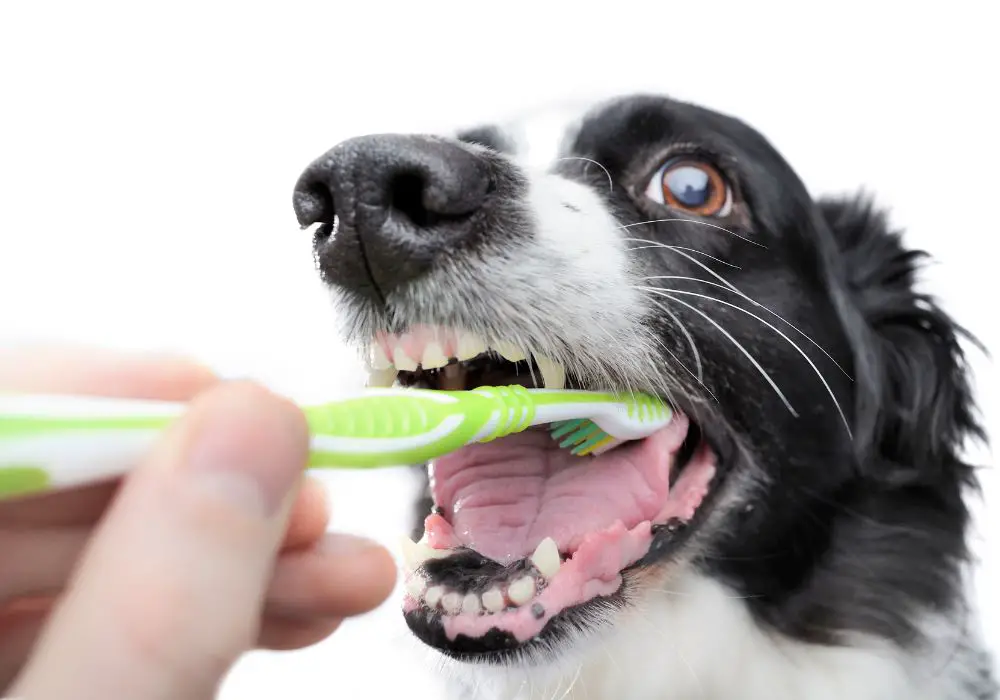
While professional veterinary care is best, you can try these homemade remedies to help temporarily brighten stained dog teeth:
- Baking soda – Make a paste with water and apply gently with a soft cloth or brush. Rinse thoroughly afterward.
- Hydrogen peroxide – Mix equal parts hydrogen peroxide and water. Wipe teeth with cotton pad or soft brush 1-2 times per week.
- Coconut oil – Smear a dab of melted coconut oil on teeth daily. It has mild antibacterial properties.
- Apple cider vinegar – Add a bit to your dog’s water or apply diluted directly onto teeth with a cloth or cotton swab. Helps combat bacteria.
- Petsmile gel – All-natural anti-plaque gel with aloe, chamomile and green tea extract. Apply daily.
- Enzymatic toothpaste – Special doggy toothpastes contain enzymes to break down plaque and stains.
Use home remedies sparingly and stop if your dog seems distressed. Check with your vet before introducing any new dental healthcare products. Professional cleanings are essential for dogs with heavy tartar and plaque buildup.
Frequently Asked Questions
How often should dogs get their teeth cleaned?
Most dogs need a full dental cleaning with a veterinarian at least once a year. Some dogs who rapidly accumulate tartar and plaque may need semi-annual or even more frequent cleanings. Senior dogs also benefit from more regular dental care.
Why is there suddenly brown stuff on my dog’s teeth?
Sudden brown stains could indicate a new problem like trauma to the mouth, oral infection, or periodontal disease. Schedule a vet visit promptly to identify the cause. Stains that appear quickly often warrant medical treatment.
Do dental treats really help clean dogs’ teeth?
Quality dental chews and treats that carry the VOHC seal have been proven to help reduce plaque and tartar. They will not eliminate the need for professional cleanings altogether, but can be a helpful supplement. Avoid extra hard treats that may damage teeth.
My dog’s teeth are yellow – what does that mean?
While whitish tartar is most common, gingivitis and plaque buildup can sometimes cause a yellowish tinge to teeth. Yellow markers on nylon bones can also stain teeth yellow. As long as there’s no evidence of decay or infection, simple tartar removal should restore a white color.
What happens if my dog breaks a tooth?
Fractured or broken teeth require immediate veterinary attention. The inner pulp may become exposed, allowing infection and pain. Broken teeth usually require extraction, but some minor chips can be restored with dental bonding. Leaving a cracked tooth untreated risks infection, abscesses and tooth loss.

